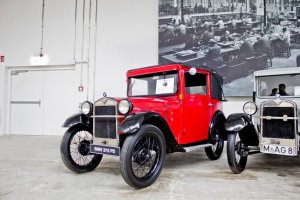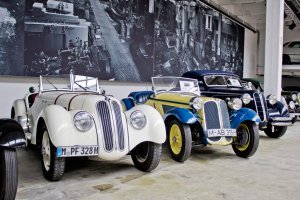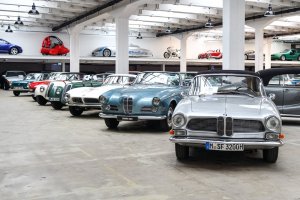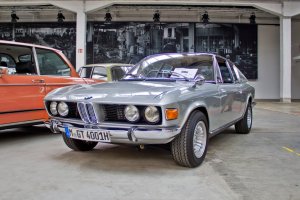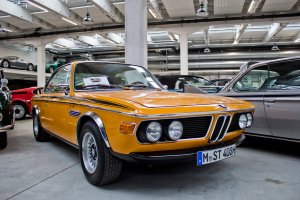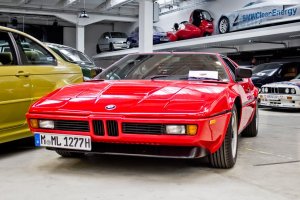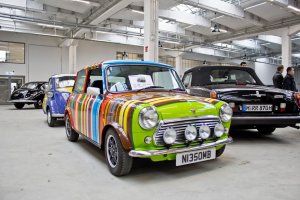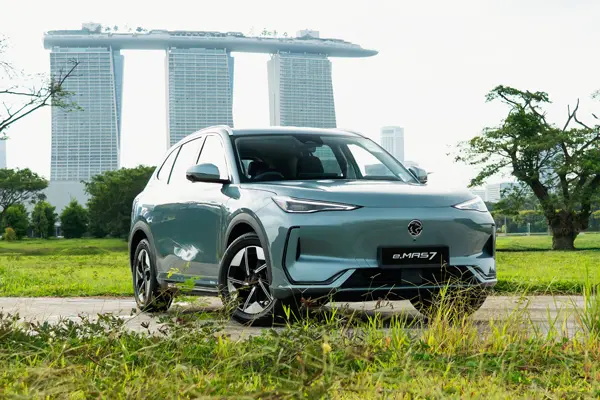BMW Group Classic - Heritage, history and hereafter
04 Oct 2016|7,427 views
This isn't simply a story about the history of BMW. There is Google and Wikipedia for that. Rather, this is a brief look at some of the historically significant BMW models that helped shape the brand's heritage, helped define its motoring identity, and helped inform its engineering future.
While on our BMW Modern vs Classic drive in Munich, we visited the BMW Group Classic headquarters. Recently opened, the physical location and building in the Milbertshofen district of Munich is actually the first BMW factory where BMW engines were produced in large numbers in 1918.
It's important to note that the place we visited isn't some dolled up exhibition of high value (and in some cases virtually priceless) cars locked away in a glass-lined museum. The BMW Group Classic headquarters is an office, a workshop, and perhaps most importantly of all, a warehouse for cars that will still see the light of day. As you might notice, many of these cars still have registered number plates - these cars still head out on drives, events, even cross-country rallies.
Bayerische Motoren Werke GmbH was formed on 7th March 1916, and its roots can be traced back to Karl Rapp and Gustav Otto. However, its primary focus of production was aircraft engines. The famous BMW logo represents this - the blue and white panels are taken from the Bavarian national flag, but the design actually represents a rotating propeller. The company also initially produced motorcycles, with the R 32 being the its first.
BMW 3/15
This is where it all began, BMW's very first production car, also known as the 'Dixi'. After the acquisition of the Dixi brand in 1927, BMW manufactured the Dixi 3/15 DA-1, which is efffectively a licensed Austin Seven with upgraded parts and features. Weighing in at approximately 400kg, the 3/15 packed around 15bhp and reached a top speed of 75km/h. However, when World War II rolled about, BMW made a decision to devote its resources almost exclusively to aircraft engine production, slowing motorcycle production and ceasing automobile production all together.
This is where it all began, BMW's very first production car, also known as the 'Dixi'. After the acquisition of the Dixi brand in 1927, BMW manufactured the Dixi 3/15 DA-1, which is efffectively a licensed Austin Seven with upgraded parts and features. Weighing in at approximately 400kg, the 3/15 packed around 15bhp and reached a top speed of 75km/h. However, when World War II rolled about, BMW made a decision to devote its resources almost exclusively to aircraft engine production, slowing motorcycle production and ceasing automobile production all together.
BMW 501
Manufactured in 1952, the 501 is the first post-war automobile built by BMW. If it weren't for the end of WWII (which saw a lot of BMW's facilities being bombed, resulting in them having to rebuild), we might never have the automotive giant that we now know. This car also marks the first iteration of the Bavarian marquee's design language that we might all be familiar with, especially the kidney radiator grilles. The roadster variant, the 507, is often considered one of the most stylish cars ever, and is notable for having several famous owners - the most famous of all being Elvis Presley (that car sold for over US$1 million in 2011).
Manufactured in 1952, the 501 is the first post-war automobile built by BMW. If it weren't for the end of WWII (which saw a lot of BMW's facilities being bombed, resulting in them having to rebuild), we might never have the automotive giant that we now know. This car also marks the first iteration of the Bavarian marquee's design language that we might all be familiar with, especially the kidney radiator grilles. The roadster variant, the 507, is often considered one of the most stylish cars ever, and is notable for having several famous owners - the most famous of all being Elvis Presley (that car sold for over US$1 million in 2011).
BMW New Class
This represented a new line of sedans and coupes (the 1500, 1800, 1600 and 2000 models) that helped ensure the brand's solvency after the 50s financial crisis. The brand was in debt and losing money by the late 50s, but these new range of cars, kickstarted by the launch of the 1500 in 1961, helped turn the company around. It also helped to establish the brand's identity for producing sport sedans. The New Class coupes also introduced the Hofmeister kink, a design feature that can be seen on most BMWs since.
This represented a new line of sedans and coupes (the 1500, 1800, 1600 and 2000 models) that helped ensure the brand's solvency after the 50s financial crisis. The brand was in debt and losing money by the late 50s, but these new range of cars, kickstarted by the launch of the 1500 in 1961, helped turn the company around. It also helped to establish the brand's identity for producing sport sedans. The New Class coupes also introduced the Hofmeister kink, a design feature that can be seen on most BMWs since.
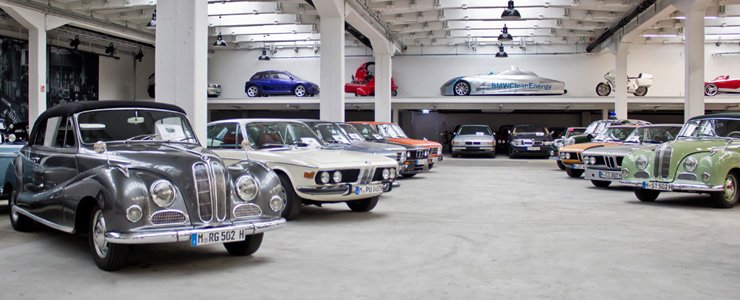 |
02 Series
Based on a shortened version of the New Class sedans, this range of cars established BMW as an international brand. The 2002 Turbo, launched at the 1973 Frankfurt Motor Show, also represented a key milestone. It was the very first turbocharged BMW car, and the first turbocharged car in the market since a brief forray by General Motors in the early 60s. The car pictured is a 2002 GT4, one of only two cars ever built, and has just recently completed the 2016 Hamburg-Berlin Classic Rally. The 02 Series also forms the precursor of the BMW 3 Series, arguably the brand's most iconic model.
Based on a shortened version of the New Class sedans, this range of cars established BMW as an international brand. The 2002 Turbo, launched at the 1973 Frankfurt Motor Show, also represented a key milestone. It was the very first turbocharged BMW car, and the first turbocharged car in the market since a brief forray by General Motors in the early 60s. The car pictured is a 2002 GT4, one of only two cars ever built, and has just recently completed the 2016 Hamburg-Berlin Classic Rally. The 02 Series also forms the precursor of the BMW 3 Series, arguably the brand's most iconic model.
BMW M GmbH
The M badge (M for Motorsport) is familiar to many. It was initially created in 1972 to support BMW's racing program, but has evolved and developed a specific portfolio of vehicles with modified, higher-trim performance models.
The first racing project by BMW M was the BMW 3.0 CSL, a homologation special built to make the car eligible for the European Touring Car Championship (1,265 were built). The car achieved racing success in the 1973 European Touring Car Championship as well as class victory at Le Mans.
The M badge (M for Motorsport) is familiar to many. It was initially created in 1972 to support BMW's racing program, but has evolved and developed a specific portfolio of vehicles with modified, higher-trim performance models.
The first racing project by BMW M was the BMW 3.0 CSL, a homologation special built to make the car eligible for the European Touring Car Championship (1,265 were built). The car achieved racing success in the 1973 European Touring Car Championship as well as class victory at Le Mans.
The first officially M-badged model was the fabled M1 (right), the first (and until the recent i8, the only) mid-engined BMW. Its rarity (only 453 were built), breathtaking design and extreme performance from the 3.5-litre I6 engine (273bhp in road-going form), contributes to the legendary status of this BMW supercar.
BMW M also racked up an impressive array of motorsport successes throughout the 70s and 80s, with its most successful motorsport model being the E30 M3. BMW M has continued to be the flag bearer for BMW's performance cars, with the all new M2 representing its latest development.
BMW M also racked up an impressive array of motorsport successes throughout the 70s and 80s, with its most successful motorsport model being the E30 M3. BMW M has continued to be the flag bearer for BMW's performance cars, with the all new M2 representing its latest development.
Mini
Acquired in 1994 as part of the Rover Group, the production of Minis ceased in 2000, with BMW subsequently continuing to produce this breed of small, compact cars under the MINI marquee. It has given rise to lovable models like the MINI One, the MINI Cooper as well as performance variants like the John Cooper Works models. Mini actually has strong racing pedigree, picking up numerous rally wins in the 60s and 70s. While the contemporary models have no doubt grown much larger, it still preserves the lively and excitable handling associated with the marquee.
Acquired in 1994 as part of the Rover Group, the production of Minis ceased in 2000, with BMW subsequently continuing to produce this breed of small, compact cars under the MINI marquee. It has given rise to lovable models like the MINI One, the MINI Cooper as well as performance variants like the John Cooper Works models. Mini actually has strong racing pedigree, picking up numerous rally wins in the 60s and 70s. While the contemporary models have no doubt grown much larger, it still preserves the lively and excitable handling associated with the marquee.
But these are cars, and cars were first and foremost made to be driven. It's admirable (and also still slightly bewildering) that BMW Group Classic fully embraces this fact - their classic cars are fastidiously maintained to be in road-going condition. Rather than just being expensive home ornaments, this quick trip to BMW Group Classic reminds us that classic cars, and all the heritage they encapsulate, aren't just monuments to be admired from afar. History and hieritage is something that should constantly be interacted with, and can only be fully appreciated through a deeper understanding of the automobile's road-going purpose.
Drive on, people, drive on.
This isn't simply a story about the history of BMW. There is Google and Wikipedia for that. Rather, this is a brief look at some of the historically significant BMW models that helped shape the brand's heritage, helped define its motoring identity, and helped inform its engineering future.
While on our BMW Modern vs Classic drive in Munich, we visited the BMW Group Classic headquarters. Recently opened, the physical location and building in the Milbertshofen district of Munich is actually the first BMW factory where BMW engines were produced in large numbers in 1918.
It's important to note that the place we visited isn't some dolled up exhibition of high value (and in some cases virtually priceless) cars locked away in a glass-lined museum. The BMW Group Classic headquarters is an office, a workshop, and perhaps most importantly of all, a warehouse for cars that will still see the light of day. As you might notice, many of these cars still have registered number plates - these cars still head out on drives, events, even cross-country rallies.
Bayerische Motoren Werke GmbH was formed on 7th March 1916, and its roots can be traced back to Karl Rapp and Gustav Otto. However, its primary focus of production was aircraft engines. The famous BMW logo represents this - the blue and white panels are taken from the Bavarian national flag, but the design actually represents a rotating propeller. The company also initially produced motorcycles, with the R 32 being the its first.
BMW 3/15
This is where it all began, BMW's very first production car, also known as the 'Dixi'. After the acquisition of the Dixi brand in 1927, BMW manufactured the Dixi 3/15 DA-1, which is efffectively a licensed Austin Seven with upgraded parts and features. Weighing in at approximately 400kg, the 3/15 packed around 15bhp and reached a top speed of 75km/h. However, when World War II rolled about, BMW made a decision to devote its resources almost exclusively to aircraft engine production, slowing motorcycle production and ceasing automobile production all together.
This is where it all began, BMW's very first production car, also known as the 'Dixi'. After the acquisition of the Dixi brand in 1927, BMW manufactured the Dixi 3/15 DA-1, which is efffectively a licensed Austin Seven with upgraded parts and features. Weighing in at approximately 400kg, the 3/15 packed around 15bhp and reached a top speed of 75km/h. However, when World War II rolled about, BMW made a decision to devote its resources almost exclusively to aircraft engine production, slowing motorcycle production and ceasing automobile production all together.
BMW 501
Manufactured in 1952, the 501 is the first post-war automobile built by BMW. If it weren't for the end of WWII (which saw a lot of BMW's facilities being bombed, resulting in them having to rebuild), we might never have the automotive giant that we now know. This car also marks the first iteration of the Bavarian marquee's design language that we might all be familiar with, especially the kidney radiator grilles. The roadster variant, the 507, is often considered one of the most stylish cars ever, and is notable for having several famous owners - the most famous of all being Elvis Presley (that car sold for over US$1 million in 2011).
Manufactured in 1952, the 501 is the first post-war automobile built by BMW. If it weren't for the end of WWII (which saw a lot of BMW's facilities being bombed, resulting in them having to rebuild), we might never have the automotive giant that we now know. This car also marks the first iteration of the Bavarian marquee's design language that we might all be familiar with, especially the kidney radiator grilles. The roadster variant, the 507, is often considered one of the most stylish cars ever, and is notable for having several famous owners - the most famous of all being Elvis Presley (that car sold for over US$1 million in 2011).
BMW New Class
This represented a new line of sedans and coupes (the 1500, 1800, 1600 and 2000 models) that helped ensure the brand's solvency after the 50s financial crisis. The brand was in debt and losing money by the late 50s, but these new range of cars, kickstarted by the launch of the 1500 in 1961, helped turn the company around. It also helped to establish the brand's identity for producing sport sedans. The New Class coupes also introduced the Hofmeister kink, a design feature that can be seen on most BMWs since.
This represented a new line of sedans and coupes (the 1500, 1800, 1600 and 2000 models) that helped ensure the brand's solvency after the 50s financial crisis. The brand was in debt and losing money by the late 50s, but these new range of cars, kickstarted by the launch of the 1500 in 1961, helped turn the company around. It also helped to establish the brand's identity for producing sport sedans. The New Class coupes also introduced the Hofmeister kink, a design feature that can be seen on most BMWs since.
02 Series
Based on a shortened version of the New Class sedans, this range of cars established BMW as an international brand. The 2002 Turbo, launched at the 1973 Frankfurt Motor Show, also represented a key milestone. It was the very first turbocharged BMW car, and the first turbocharged car in the market since a brief forray by General Motors in the early 60s. The car pictured is a 2002 GT4, one of only two cars ever built, and has just recently completed the 2016 Hamburg-Berlin Classic Rally. The 02 Series also forms the precursor of the BMW 3 Series, arguably the brand's most iconic model.
Based on a shortened version of the New Class sedans, this range of cars established BMW as an international brand. The 2002 Turbo, launched at the 1973 Frankfurt Motor Show, also represented a key milestone. It was the very first turbocharged BMW car, and the first turbocharged car in the market since a brief forray by General Motors in the early 60s. The car pictured is a 2002 GT4, one of only two cars ever built, and has just recently completed the 2016 Hamburg-Berlin Classic Rally. The 02 Series also forms the precursor of the BMW 3 Series, arguably the brand's most iconic model.
BMW M GmbH
The M badge (M for Motorsport) is familiar to many. It was initially created in 1972 to support BMW's racing program, but has evolved and developed a specific portfolio of vehicles with modified, higher-trim performance models.
The first racing project by BMW M was the BMW 3.0 CSL, a homologation special built to make the car eligible for the European Touring Car Championship (1,265 were built). The car achieved racing success in the 1973 European Touring Car Championship as well as class victory at Le Mans.
The M badge (M for Motorsport) is familiar to many. It was initially created in 1972 to support BMW's racing program, but has evolved and developed a specific portfolio of vehicles with modified, higher-trim performance models.
The first racing project by BMW M was the BMW 3.0 CSL, a homologation special built to make the car eligible for the European Touring Car Championship (1,265 were built). The car achieved racing success in the 1973 European Touring Car Championship as well as class victory at Le Mans.
The first officially M-badged model was the fabled M1 (right), the first (and until the recent i8, the only) mid-engined BMW. Its rarity (only 453 were built), breathtaking design and extreme performance from the 3.5-litre I6 engine (273bhp in road-going form), contributes to the legendary status of this BMW supercar.
BMW M also racked up an impressive array of motorsport successes throughout the 70s and 80s, with its most successful motorsport model being the E30 M3. BMW M has continued to be the flag bearer for BMW's performance cars, with the all new M2 representing its latest development.
BMW M also racked up an impressive array of motorsport successes throughout the 70s and 80s, with its most successful motorsport model being the E30 M3. BMW M has continued to be the flag bearer for BMW's performance cars, with the all new M2 representing its latest development.
Mini
Acquired in 1994 as part of the Rover Group, the production of Minis ceased in 2000, with BMW subsequently continuing to produce this breed of small, compact cars under the MINI marquee. It has given rise to lovable models like the MINI One, the MINI Cooper as well as performance variants like the John Cooper Works models. Mini actually has strong racing pedigree, picking up numerous rally wins in the 60s and 70s. While the contemporary models have no doubt grown much larger, it still preserves the lively and excitable handling associated with the marquee.
Acquired in 1994 as part of the Rover Group, the production of Minis ceased in 2000, with BMW subsequently continuing to produce this breed of small, compact cars under the MINI marquee. It has given rise to lovable models like the MINI One, the MINI Cooper as well as performance variants like the John Cooper Works models. Mini actually has strong racing pedigree, picking up numerous rally wins in the 60s and 70s. While the contemporary models have no doubt grown much larger, it still preserves the lively and excitable handling associated with the marquee.
But these are cars, and cars were first and foremost made to be driven. It's admirable (and also still slightly bewildering) that BMW Group Classic fully embraces this fact - their classic cars are fastidiously maintained to be in road-going condition. Rather than just being expensive home ornaments, this quick trip to BMW Group Classic reminds us that classic cars, and all the heritage they encapsulate, aren't just monuments to be admired from afar. History and hieritage is something that should constantly be interacted with, and can only be fully appreciated through a deeper understanding of the automobile's road-going purpose.
Drive on, people, drive on.
Thank You For Your Subscription.




























